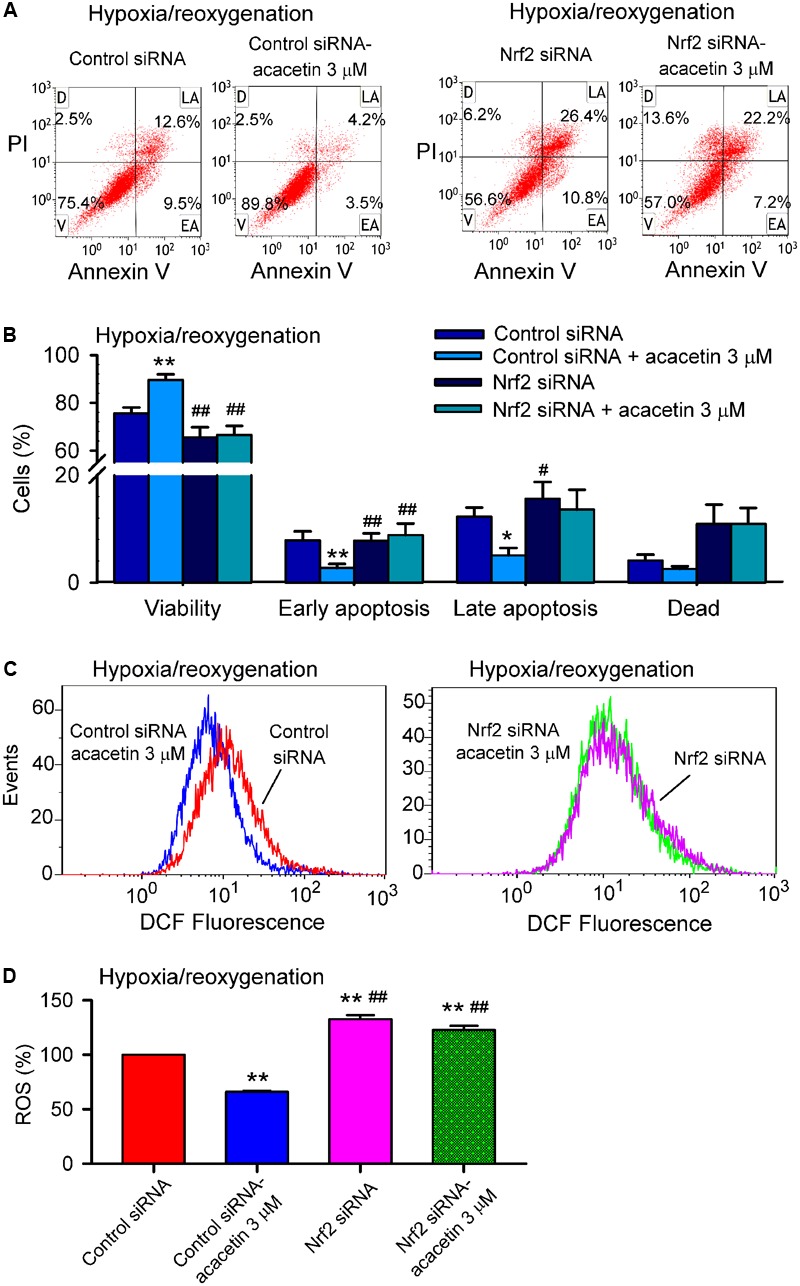FIGURE 6.

Silencing Nrf2 abolished cardiomyocytes protection of acacetin against hypoxia/reoxygenation insult. (A) Flow cytometry graphs showing cell viability, early apoptosis, late apoptosis, and dead cells in H9C2 cardiomyoblasts transfected with control siRNA or Nrf2 siRNA for 48 h, then subjected to hypoxia/reoxygenation in the absence (vehicle control) or presence of 3 μM acacetin. (B) Mean percent values of cell viability, early apoptosis, late apoptosis, and dead cells in H9C2 cardiomyoblasts transfected with control siRNA or Nrf2 siRNA for 48 h, then subjected to hypoxia/reoxygenation in the absence (vehicle control) or presence of 3 μM acacetin. (C) Flow cytometry graphs showing ROS production in H9C2 cardiomyoblasts with the treatment used in (A). (D) Mean percent values of ROS production in H9C2 cardiomyoblasts. Data were expressed as mean ± SEM and analyzed by one-way ANOVA followed by Bonferroni-test (n = 5 individual experiments, ∗P < 0.05, ∗∗P < 0.01 vs. control siRNA; #P < 0.05, ##P < 0.01 vs. control siRNA with acacetin).
